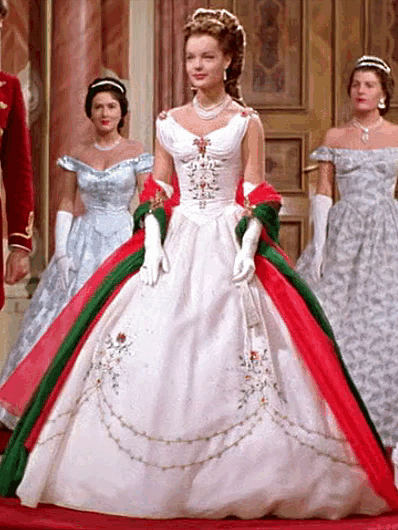ilaria - italy - history - enfj - 2w3 - too many fandoms
Don't wanna be here? Send us removal request.
Text







You must know... surely, you must know it was all for you.
PRIDE & PREJUDICE — 2005, dir. Joe Wright
2K notes
·
View notes
Text


CINDERELLA 1950, dir. Wilfred Jackson, Hamilton Luske, Clyde Geronimi
1K notes
·
View notes
Text








- So what do you recommend to encourage affection? - Dancing. Even if one's partner is barely tolerable.
PRIDE AND PREJUDICE (2005) dir. Joe Wright
442 notes
·
View notes
Photo




WOMEN’S HISTORY † MARIA DE VENTADORN (? – 1222)
Maria de Ventadorn was one of the three daughters of Raimond II, vescomte de Torena and Elisa de Severac. The troubadour Bertran de Bòrn, senhor d'Autafòrt referred to Maria and her sisters as, “las tres de Torena” and proclaimed them to be of great beauty. At some point, she married Eble V, vescomte de Ventadorn, the grandson of the patron of the troubadour Bernat de Ventadorn. She was his second wife and they had one son, Eble. In addition to patronizing troubadours, Maria was a trobairitz in her own right, though only one composition attributed to her survives. Her vida claims that her “knight” was Hugues IX de Lusignan, the nephew of Aimery de Lusignan, king of Cyprus and Guy de Lusignan, husband of Sibylle de Jérusalem.
141 notes
·
View notes
Text









The Sissi Trilogy + Costumes
Elisabeth of Austria-Hungary's white, red & green dress in Sissi - Fateful Years of an Empress (1957).
// requested by anonymous
48 notes
·
View notes
Text










Ludwig van Beethoven's The Pastoral Symphony from FANTASIA (1940)
1K notes
·
View notes
Text










CLASSIC MOMENTS OF BARBIE [ 3 / 5 ]
From: Barbie and the Magic of the Pegasus 2005 Directed By: Greg Richardson
259 notes
·
View notes
Text


Imperial Staff: Catherine Adolphovna Schneider
Yekaterina Adolfovna Shneider was born in 1856 and, until 1884, taught Russian language and literature at a girls’ boarding school in Moscow. She was a niece of G. I. Girsh, who served as a surgeon to Emperors Alexander II and Alexander III.
In spring 1884, the family of Grand Duke Ludwig IV of Hesse—who were sending their daughter Princess Elizabeth of Hesse (“Ella”), formerly engaged to Grand Duke Sergei Alexandrovich—to Russia, also brought her younger sister Princess Alix (the future Empress Alexandra Feodorovna). During the wedding celebrations, Alix met her future husband, Tsesarevich Nicholas Alexandrovich.
Among those appointed to her court—on the recommendation of her uncle - was Shneider, who became the Grand Duchess’s teacher of Russian language. Under the instruction of the 28-year-old Shneider, the 20-year-old Grand Duchess made remarkable progress both in language and elegant literature; within a few years she was already performing in amateur theatrical productions.
At the theatre in Tsarskoye Selo, “Ella” (Elizabeth) played Tatyana Larina, with Tsesarevich Nicholas Alexandrovich playing the ardently enamored Eugene Onegin. Yekaterina A. Shneider continued in the Grande Duchess’s service until 1894.
When Princess Alice, now engaged to Tsesarevich Nicholas, was preparing for her journey to Russia, she was sent—on Elizabeth’s recommendation—to Coburg, where in a short time Shneider also taught Alix Russian. Upon Alix’s arrival in Russia, Shneider assumed a similar role at the court of the future Empress. The bond between the two women grew so close that they could hardly imagine life without each other.
Princess Alix first mentions Shneider in a letter to her fiancé (the Tsesarevich) dated 4 May 1894:
“Dear little woman—will you see her before she arrives? I hope she won’t get lost in the train station. If only you could come here with her…”
By 14 May 1894, at Windsor Castle, she writes:
“This dear little woman insists we speak only in Russian, and here I stand smiling at her, unable to understand… She tries to drill things into me…”
However, the future Empress also taught Shneider English, writing on 26 May 1894 from Harrogate:
“Gretchen makes little Shneider read children’s rhymes in English—it’s very amusing… They read ‘The House That Jack Built’, and it distracts me from writing. I’m learning Lermontov by heart in Russian…”
By the following year, Elizabeth (Ella) wrote to Queen Victoria that Alixwas making significant progress in Russian:
“She writes to Nicky so beautifully, with very few mistakes, and her sentence structure is quite correct…”
Even after Alix’s marriage and coronation as Empress Alexandra Feodorovna, she continued her Russian lessons. On 4 February 1895, she wrote:
“Shneiderlein comes every morning, and we study diligently together. Afterward she reads for an hour before dinner. Nicky is busy with his papers, he has so much work that we rarely get to be alone…”
Affectionately called “Shneiderlein” or “Trina”, Yekaterina A. Shneider became one of the Empress’s most trusted confidantes—without whose advice Alexandra could hardly make any decisions or travel.
Every trip Alexandra made—to Crimea or Finland—Shneider accompanied her. After the royal children were born, Shneider cared for them, particularly the grand duchesses, even teaching them German as they grew. Although she held no official court title, she served as their unofficial governess from their earliest years, beloved by all and affectionately known as “Trina.”
Recalling Shneider, Lieutenant-General A. A. Mosolov, former head of the court chancery, wrote:
“The Empress suffered greatly from shyness in life and wanted to accustom her daughters from childhood to interacting with strangers. So when Olga turned ten, and Tatyana and Maria eight and six respectively, they all had breakfast at the common table. Although still lively, they comported themselves with composure. Gradually, primary oversight of the children passed to E. A. Shneider... For a long time, she lived at court without any official rank. Later, Count Frederiks created for her the title of Hof-lektoris, seeing the inconvenience of her accompanying the grand duchesses everywhere without a court title. She was incredibly devoted to both the Empress and the children… She served as secretary, wardrobe manager, and Russian teacher—all purchases and orders were made through her. She taught the children all subjects when they were very young and accompanied them wherever needed. Her serene character and remarkable kindness were striking—incredible how this delicate woman managed it all, always ready.”
When the Imperial family was placed under house arrest at Tsarskoye Selo, E. A. Shneider voluntarily remained with them and continued teaching grammar and arithmetic to the grand duchesses.
When the family was exiled to Siberia, she insisted on accompanying them. In Tobolsk, Xenia lived with her along with her maids in the upper floor of the merchant Kornilov’s house. She continued visiting the “House of Freedom” to teach Tsesarevich Alexei Russian daily.
After the items left behind in the Volga-Kama Bank building (occupied by the Ural Sovdep) were searched, a “wax-covered notebook with a diary from 1 January to 4 May” was discovered. At first believed to belong to the Empress’s lady-in-waiting Countess Gendrikova, it was later confirmed to be Shneider’s own diary, where she regularly recorded events from the “House of Freedom” and its surroundings in early 1918.
Despite the separation from the Empress and Tsesarevich, Shneider remained devoted to the grand duchesses. She followed them to Yekaterinburg, arriving on 23 May 1918, and was imprisoned there in Arrest House No. 2 until 20 July 1918.
According to a secret report dated 17 May 1919 by Lieutenant-General M. K. Diterikhs, addressed to Admiral Kolchak, on 20 July Shneider, Countess Gendrikova, and Princess Elena Petrovna of Serbia were sent under guard to Perm and imprisoned in the provincial prison. In the night of 4 September (N.S.), by decision of the Perm Extraordinary Commission, they were taken from prison to a field near the Siberian Tract, killed in a ditch a few versts from the city, and buried. The imperial footman Alexei Volkov managed to escape.
Anna Vyrova recalled in her memoirs:
The first teacher of the Imperial children, she from whom they received their elementary education, was Miss Schneider, familiarly called "Trina," a native of one of the Baltic states of the Empire. Miss Schneider first came into service, years before the marriage of the Emperor and Empress, as instructor in the Russian language to Elizabeth, Grand Duchess Serge. Afterwards she taught Russian to the young Empress, and was retained at Court as reader to her Majesty. "Trina" was rather a difficult person in some ways, taking every advantage of her privileged position, but she was undeniably valuable and was heart and soul in her devotion to the family. "Trina" was supposed to teach the imperial children German but she had less success with that language than M. Gilliard with French. The Emperor and Empress spoke English almost exclusively, and so did the Empress's brother, the Grand Duke of Hesse and his family. Among themselves the children usually spoke Russian. The Tsarevich alone, thanks to his constant association with M. Gilliard, mastered the French language.
18 notes
·
View notes


































